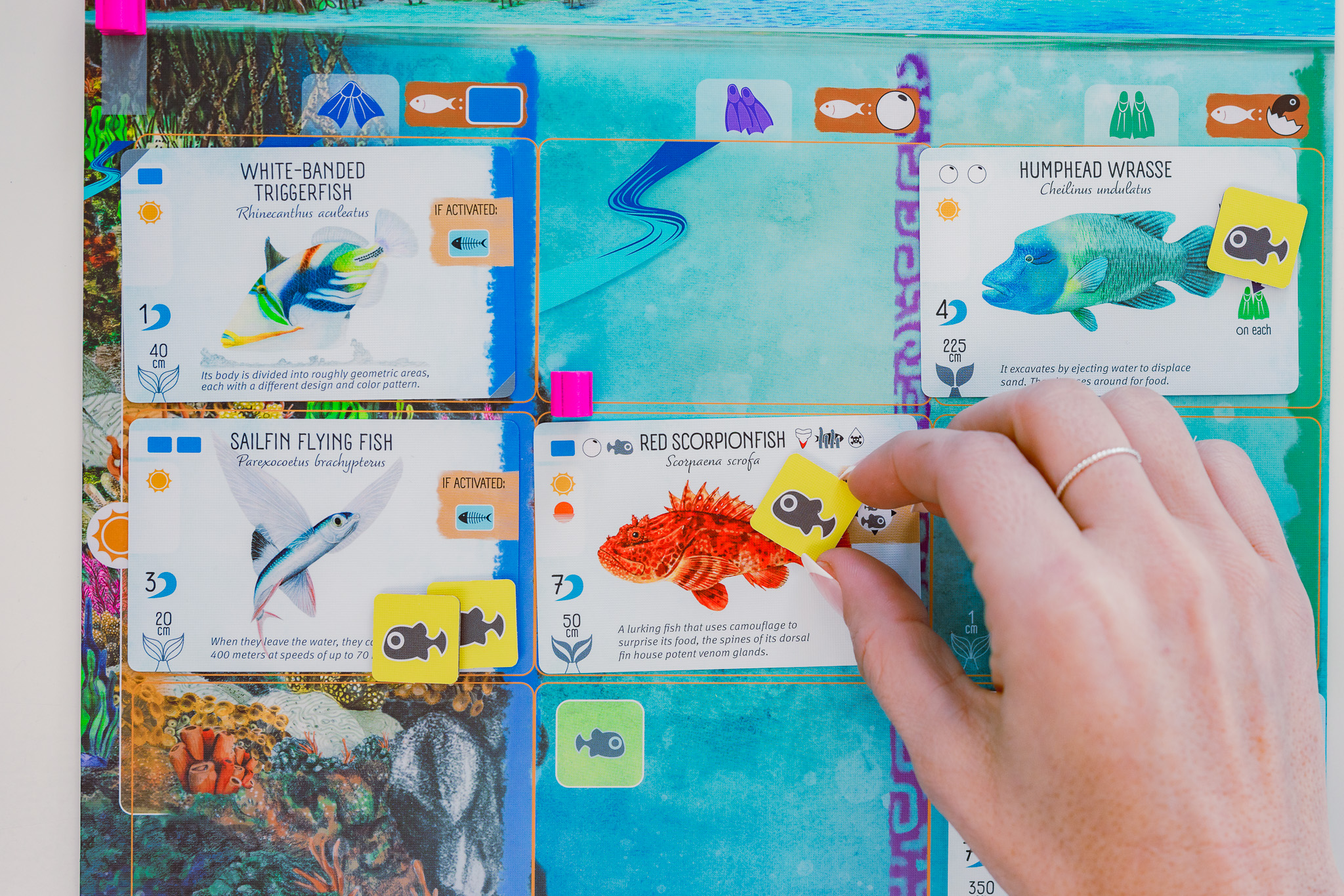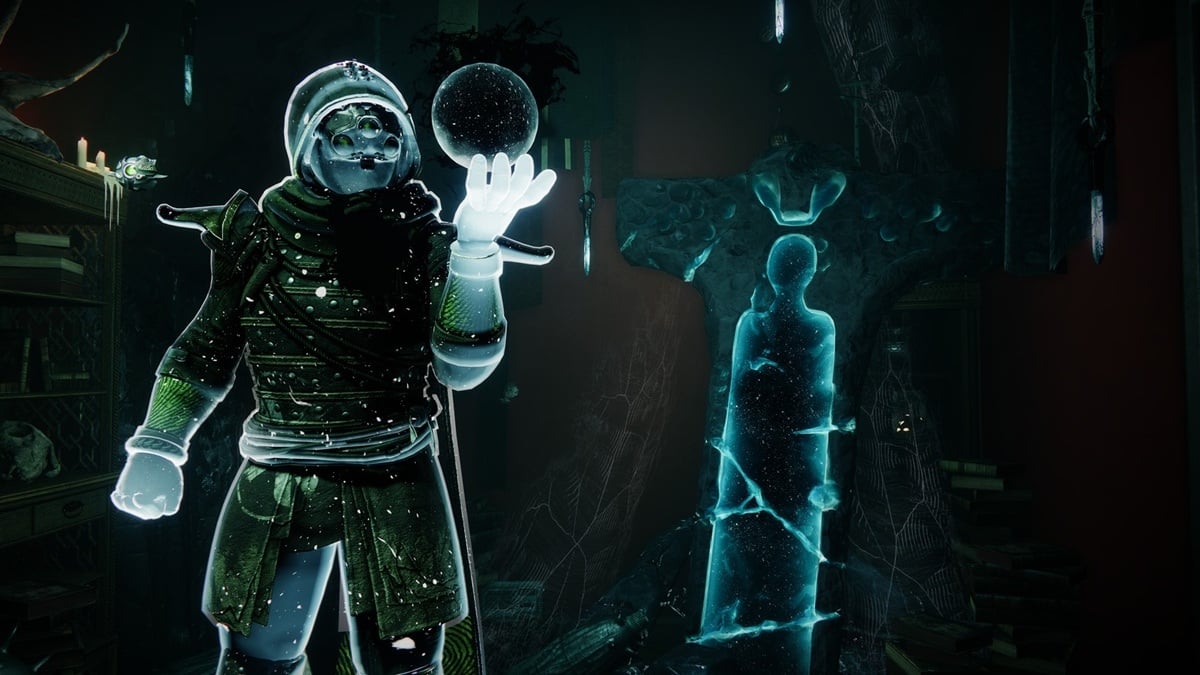
Wingspan, Elizabeth Hargrave’s breakout board game about birds, has been unstoppable. Well over a million copies have been sold, and it even led to a sequel in 2024 about observing and nurturing dragons. Its reach continues to envelop the hobby as the third title in the series is upon us, and this one’s all about fish. Much like its predecessor Wyrmspan, however, it faces a tough dilemma of providing both recognizable gameplay that appeals to fans of the original title, while also trying to carve out its own identity and offer something new.
Finspan fits comfortably alongside its predecessors. It’s designed by David Gordon and Michael O’Connell with Hargrave returning as the credited developer. Players take on the roles of marine researchers seeking to discover a wide range of aquatic life and observe their activity. Over four rounds — each mapping to a week of research — players will dive into the waters of their personal habitats, discover fish, and gain various benefits. The goal is to establish the strongest collection of oceanic wildlife and achieve the highest score by the end of the fourth week.

Much like the previous title, Wyrmspan, Finspan builds upon the foundation of Wingspan while offering a few personal touches. Players once again collect handfuls of unique cards representing different species that they play on their personal boards. To play a card, typically you have to discard others from your hand, and possibly remove an egg or young fish token from your habitat as well. This is very similar to Wingspan, as you strategically filter through your available fish to figure out which provides the best benefits while syncing with your growing engine in play.
Spatial considerations remain a key component, and even receive further emphasis in this new iteration. Fish cards are placed in slots in one of three vertical lanes on your personal board. This is a subtle yet meaningful differentiator from its predecessors, as ocean boards are organized vertically instead of horizontally. While it’s functionally similar, it does alter the feel of your habitat as it captures a sense of depth. This provides a nice texture that helps bolster Finspan’s personality and separate it from its peers.
A truly new detail is the organization of ocean depth into three distinct areas. The Sunlight Zone consists of the spaces near the surface, the Twilight Zone denotes the murky middle depths, and the Midnight Zone refers to the down deep, where the largest and most peculiar fish reside. Some fish may only be placed in certain zones, forming spatial restrictions on their deployment. This is a further wrinkle, albeit one that’s straightforward and easy to internalize.
Instead of placing a fish, you can spend your turn taking one of your diver meeples and plunging downward through one of the three vertical lanes on your board
This sense of depth is reinforced by the diving action. Instead of placing a fish, you can spend your turn taking one of your diver meeples and plunging downward through one of the three vertical lanes on your board. Each of the three depths provides unique benefits, such as laying eggs or moving around the young fish that hatch from them. Each of these egg and young fish tokens are worth points at the end of play, but they also function as a resource to help you acquire and play new fish cards. You also trigger special abilities on fish you dive past, which offers additional synergies and opportunity. Deciding how often to dive versus playing fish is a central strategic component of play, and a large determinant in your ability to score gobs of points.
This system works similarly to the exploration in Wyrmspan, but it’s a clever twist to tie it into the varying depth levels. It’s a key consideration, as Finspan features only a few flourishes to gain separation from the previous Wingspan titles. This is a tough balancing act, as the familiarity of mechanisms functions as comfort food, clearly appealing to those who enjoyed the previous games in the series. But it needs to carve out a niche or two to develop its own character, otherwise there’s no point to its existence and you’d be better off playing what you already have.
There is a sense that this is not just Wingspan with a new coat of paint. Beyond the setting details, Finspan does include small refinements that improve upon Wingspan’s base. A main consideration is the streamlining of resources. Instead of five different food types needed to play cards, you only need to consider what cards you can afford to discard in order to pay costs, along with your supply of eggs and young fish on your board. This is strongly unified and feels more in line with the rest of the design. Just like with Wyrmspan, the randomized resource rolls are gone and that whole chunk of rules has been extracted. Beautifully, this allows players to focus on the state of their board and reframes the game around the fish themselves. Finspan benefits well from this newfound focus.

Another iterative improvement is the Automa solitaire system. This card-driven bot opponent facilitates an interesting challenge that doesn’t diverge far from multiplayer Finspan. This series works well in this format, partially because play is non-interactive with effort expended on personal boards. The card system here is a step forward from the two previous -span games, offering a more sophisticated range of options with unique scoring pursuits. Playing against the Automa is as entertaining and challenging as ever.
Those who shirked Wingspan and never enjoyed its offerings will not find a radically new experience here. Finspan is Wingspan, by and large, with a few twists and quirks to establish its marine setting. It does include fundamental enhancements to the system, thus improving an already pleasurable experience. Like Wyrmspan, Finspan likely won’t take the industry by surprise, but I fully expect it to find similar commercial success and carry forward the legacy of one of the most successful games of the past decade.
Finspan is currently available for preorder. The game was reviewed using a copy provided by Stonemaier Games. Vox Media has affiliate partnerships. These do not influence editorial content, though Vox Media may earn commissions for products purchased via affiliate links. You can find additional information about Polygon’s ethics policy here.
Source:https://www.polygon.com/review/508840/finspan-sequel-to-wingspan-review














